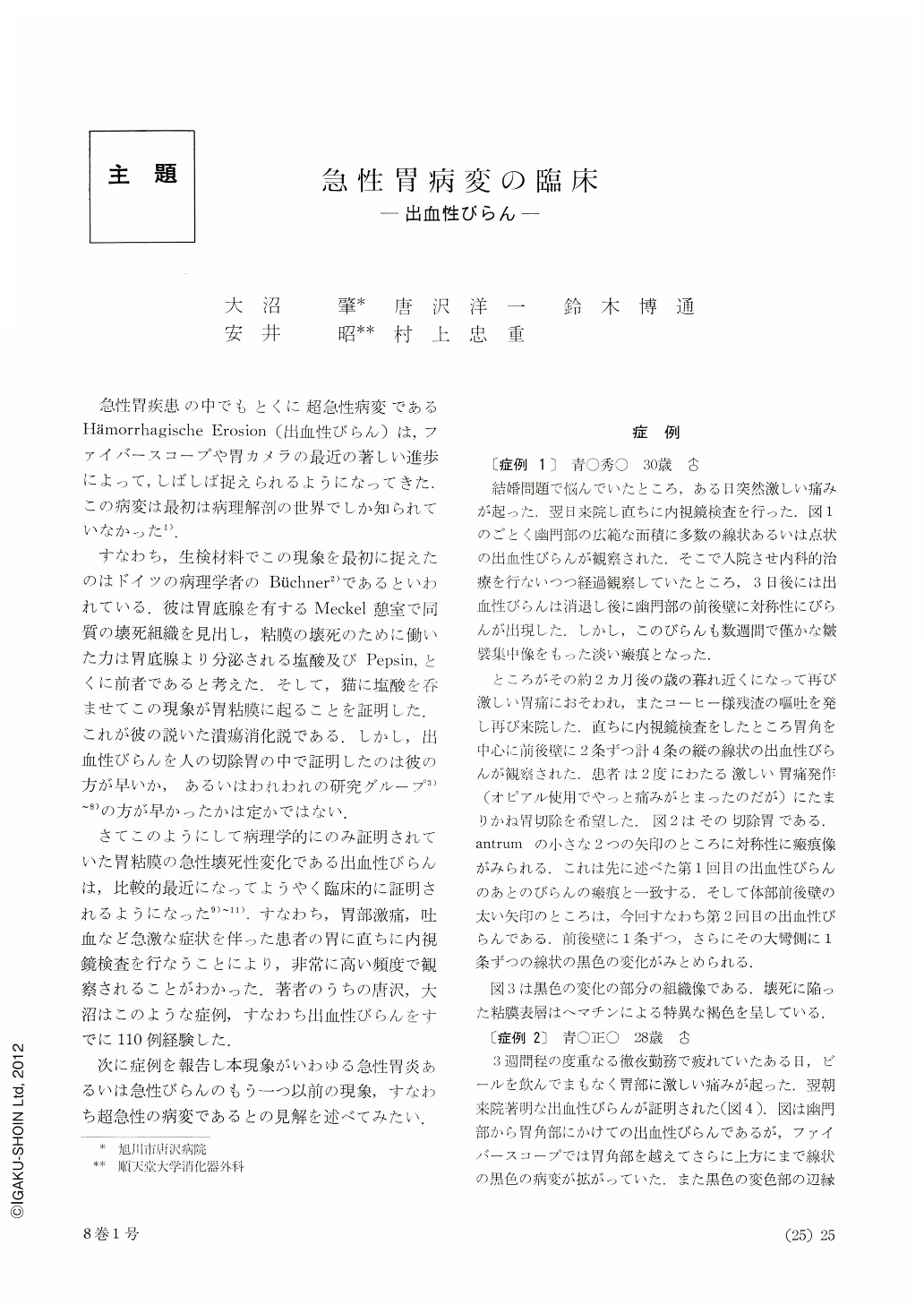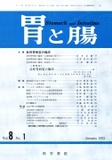Japanese
English
- 有料閲覧
- Abstract 文献概要
- 1ページ目 Look Inside
急性胃疾患の中でもとくに超急性病変であるHämorrhagische Erosion(出血性びらん)は,ファイバースコープや胃カメラの最近の著しい進歩によって,しばしば捉えられるようになってきた.この病変は最初は病理解剖の世界でしか知られていなかった1).
すなわち,生検材料でこの現象を最初に捉えたのはドイツの病理学者のBüchner2)であるといわれている.彼は胃底腺を有するMeckel憩室で同質の壊死組織を見出し,粘膜の壊死のために働いたカは胃底腺より分泌される塩酸及びPepsin,とくに前者であると考えた.そして,猫に塩酸を呑ませてこの現象が胃粘膜に起ることを証明した.これが彼の説いた潰瘍消化説である.しかし,出血性びらんを人の切除胃の中で証明したのは彼の方が早いか,あるいはわれわれの研究グループ3)~8)の方が早かったかは定かではない.
“Hemorrhagic erosion” (H .E.), studied histopathologically in the resected stomachs by the authors (Murakami et al.) in 1960, has been difficult to demonstrate clinically. However, we have encountered recently by endoscopy more than 110 cases of hemorrhagic erosion during the past 7 years in Karasawa Hospital, Asahikawa.
Most of this lesion was found by immediate endoscopic examinations of the patients complaining of severe epigastralgia or hematemesis. Histopathological identification was carried out between the blackened areas in hemorrhagic erosion and those in the resected stomach. It was also found that those blackened areas were not due to adhered coagula but they represented coagulation necrosis itself. In 11 cases distinct erosion or ulcer was seen to remain after the blackened spots had fallen off. On the gastric mucosa other than the blackened areas were also seen such pictures as desquamation of the superficial epithelium, its disorderly hyperplasia, exposure of the lamina propria, outflowing of exudate, marked cellular infiltration and dilated capillaries, all compatible with signs of acute gastritis. These changes were especially manifest in those eroded areas where blackened spots had fallen off.
In one sense hemorrhagic erosion is a super-acutechange that precedes gastritis and in another it is an acute change appearing side by side with acute gastritis. At any rate, hemorrhagic erosion is a fundamentally important change essential to the understanding of acute lesions of the stomach.

Copyright © 1973, Igaku-Shoin Ltd. All rights reserved.


